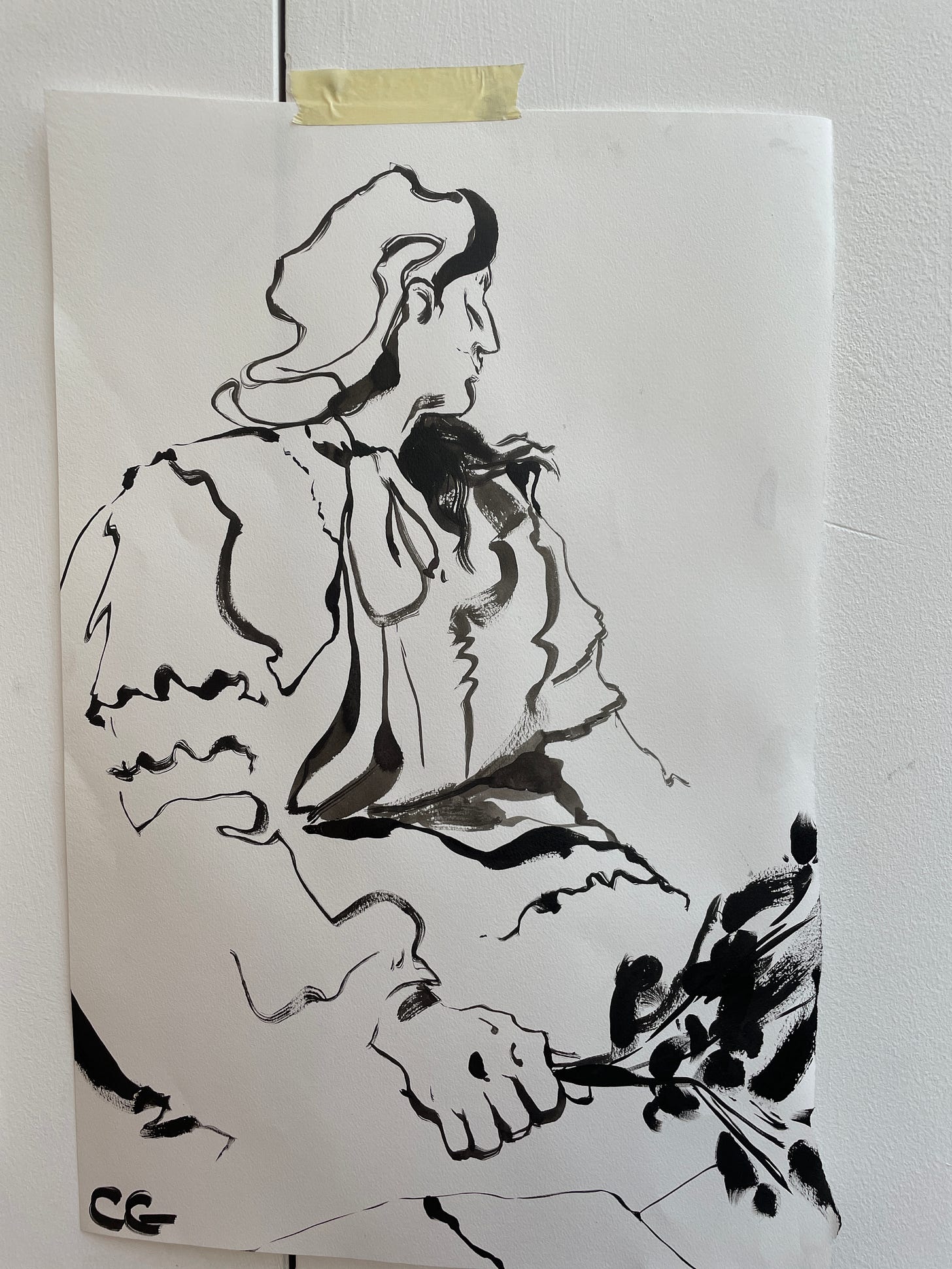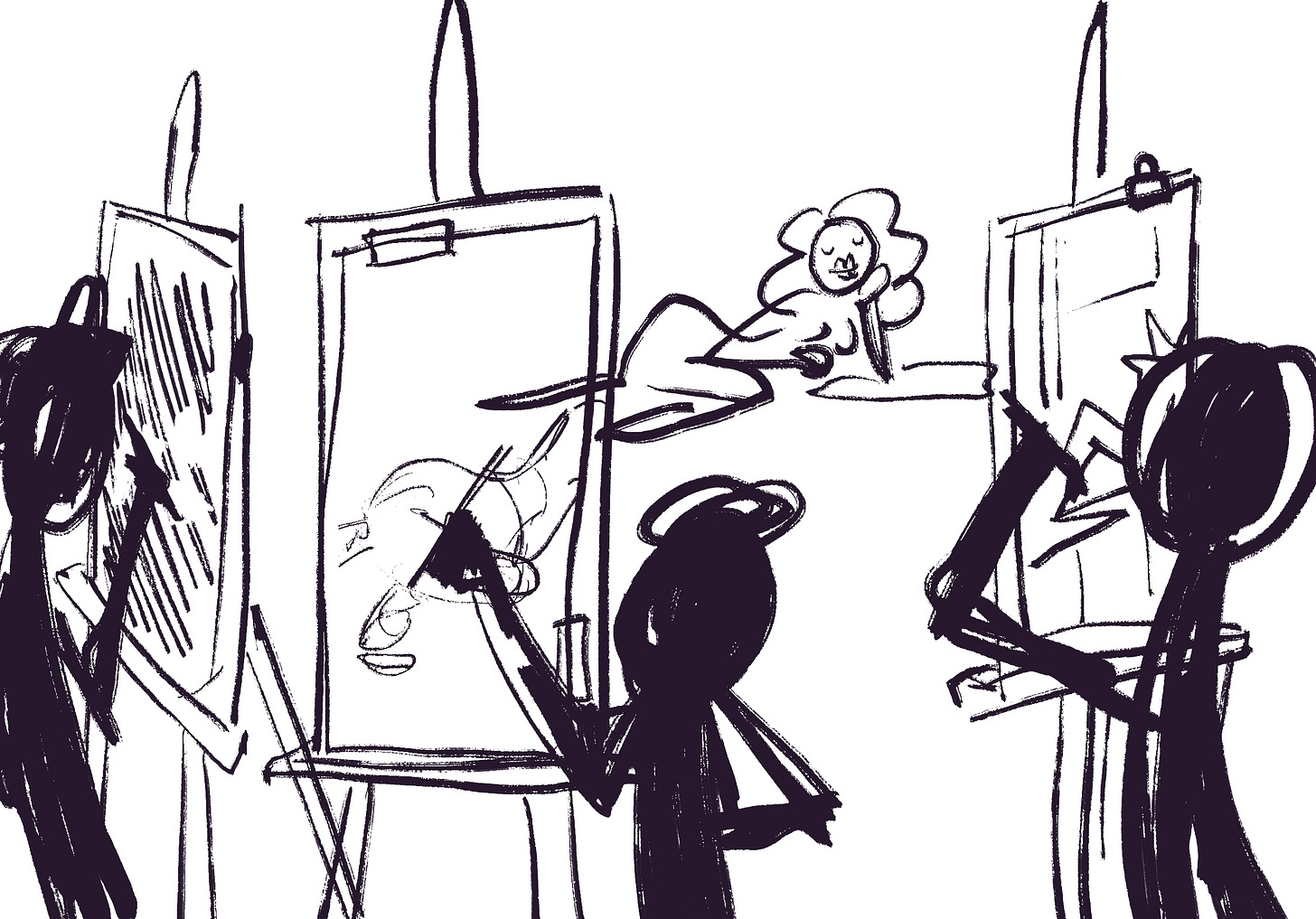Why did you become a designer in the first place?
For me, it was realising there was no money in drawing my catgirl anime OCs (boy was I wrong there), and loving technology and art and communication and finding that design filled that niche.
The Artist’s Way, a book I have discussed previously and STILL NEVER FINISHED, calls this a ‘shadow career’. By her aspersions, I should have been an artist, but I found a career that mirrors art without having to fully commit to the judgement of others.
I’m not sure I 100% agree. But most designers I know started out as creatives. The weird kids writing fanfics in the back of our school books, or learning rudimentary CSS to design websites for our Neopets.
We started as creators, making things with what we had at hand. We ended up as arbiters of flow charts and ticket breakdowns- maybe with a sneaky prototype in the middle.
I believe going back to your roots of creative practice can have a massive, tangible benefit to your career as a designer. Here’s why, and how you can find that for yourself.
Design is sensory
As I’ve written about before, I think it’s rare to find a UX role that is entirely divorced from the craft of visual presentation and design.
As humans, we understand information by
Data gathered through our 5 (9?) senses
Interpreting that data based on previous experience, biases, context etc.
UX is a visual, auditory, sensory discipline. Even if you think you’re only the technical type of designer who makes flow charts, someone will eventually perceive what you build.
The practice of other crafts (audio, visual, sensory) feeds into your understanding of user perception and the balance of those elements.
It could be going to a life drawing class.
It could be writing a comic
It could be jamming away on the ole’ six string.
Honestly there are so many ways- and you need to try creative outlets to see which ones resonate with you!
The true joy is that you’re not being evaluated by it. It brings you back to making for the spirit of making, going into a flow state, and reconnecting with the primal part of ourselves that is why we make things in the first place
The practice of sketching my silly little comics for this blog has been such a rewarding creative outlet. I’m not a comics artist. They’re not great. But people like them, and it keeps my hand in, and it makes the page easier to scan. And the very fact I make them every week gives me the practice of translating words into drawn pictures. Doing something creative for the joy of it.
Creative Cross-Pollination
The first thing I did on my career break was a one-week intensive printmaking course. This inspired me to enroll for two days a week for the Spring term; Experimental Printmaking in the Life Room, and Life Drawing: Observation and Imagination.
I was first struck by the amount of people in the room in a similar position to me. They’re architects, photographers, interior designers and sign painters, many of whom are also taking time out, or reducing their hours, in order to explore a part of their creativity not immediately connected to their day job.
Doing creative work not related to your job exposes you to other forms of making, but also other makers. It opens your mind to the possibility of what you want design to be in your life.
It’s really cosy to define yourself in the box of who you are as a designer, especially when you’re establishing yourself! When you’ve gone through the rigmarole of job applications, you become really good as seeing yourself as a box ticking exercise. A list of ‘appropriate’ design skills that best fit the whims of a business.
If you allow yourself to be defined by the craft, you limit your future possibilities. Meeting creatives of different disciplines keeps your horizons broad.
Great design careers sit outside the box
Visiting Hallyu! The Korean Wave, it stood out to me how many of the fashion pieces were created by designers who previously had illustrious careers in other disciplines
Plenty of designers have moved between craft and art practice over the centuries, and used the two to inform each other. Think da Vinci, Virgil Abloh, Gerard Way (the Umbrella Academy graphic novel is a masterpiece ok)…
As we discussed in Game UX Design article, all user experiences are becoming more gamey and immersive as audience behaviour shifts. I’d argue this necessitates a greater understanding of the broader arts, for all designers.
Can you be a great UX designer if you don’t use (and explicitly or subconsciously respond to) other products? I don’t think so. Can you create engaging multi-sensory experiences without engaging with your own creative senses? I’m not sure you can.
Your craft grows and develops and you grow in your career, you will incorporate more of your passions into the work that you do- if you allow yourself to be open to it.
Good design is understanding human behaviour and sensory feedback, and transcends barriers of dicispine. The best designers paint the world with a broad brush. Give yourself permission to become one of them 💖
Letter from the Editor
It’s been a few weeks- hello! I’ve had the awful lurgy/flu that everyone’s been having, absolutely knocked me out. Some good things have happened too (I’ve decided to go freelance!) More on that next week. I hope you’re all well!








